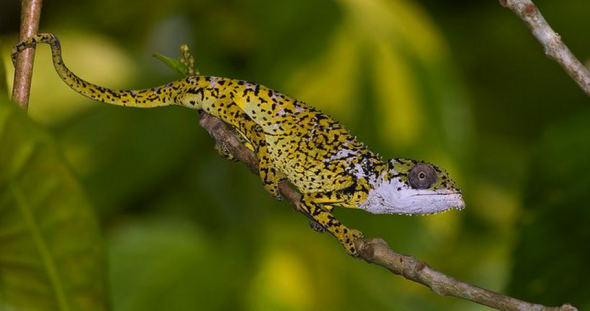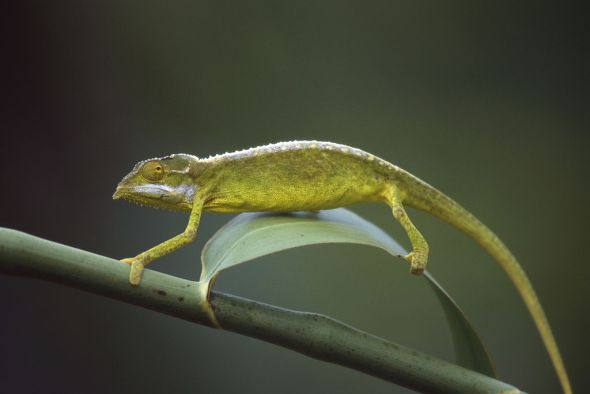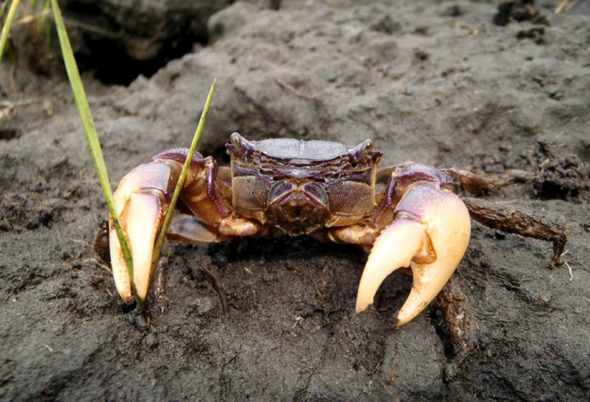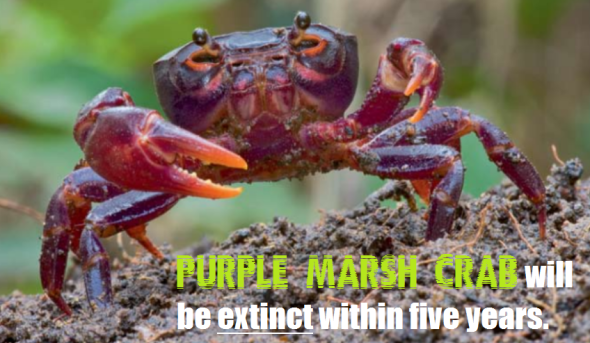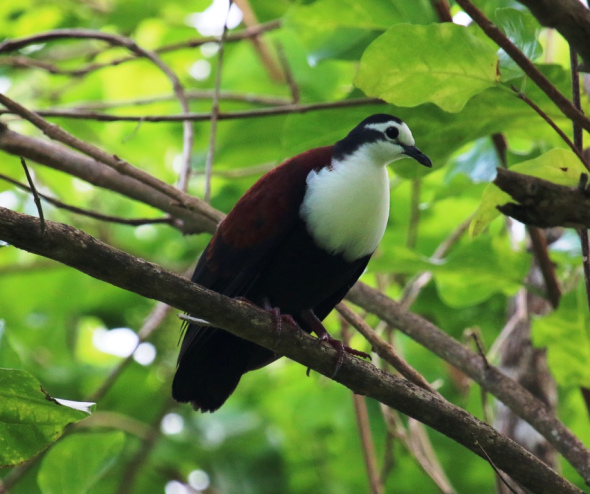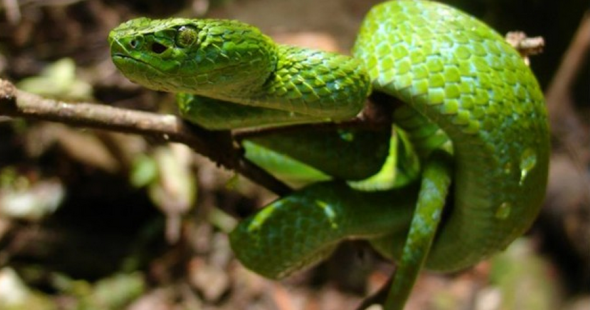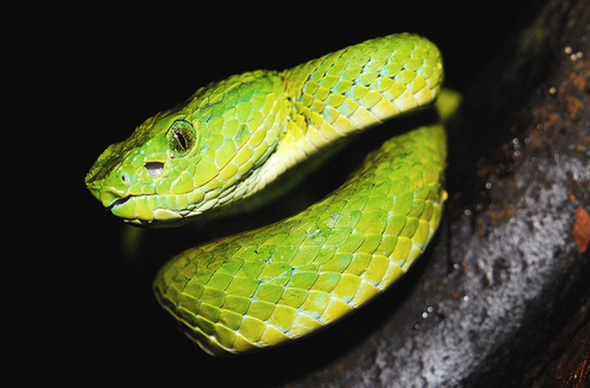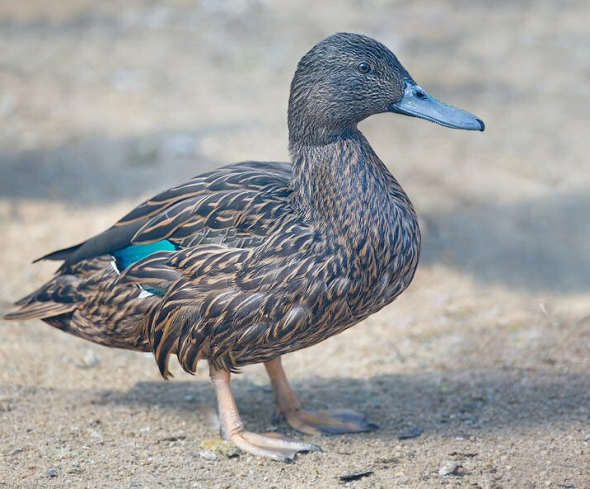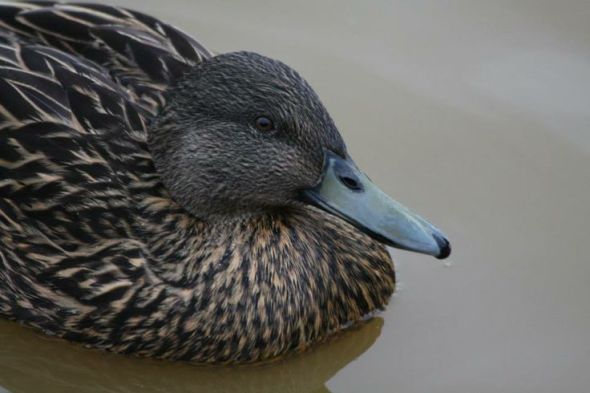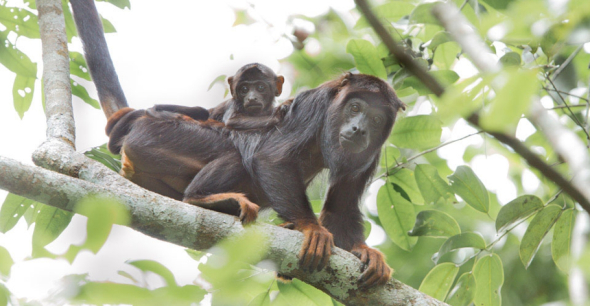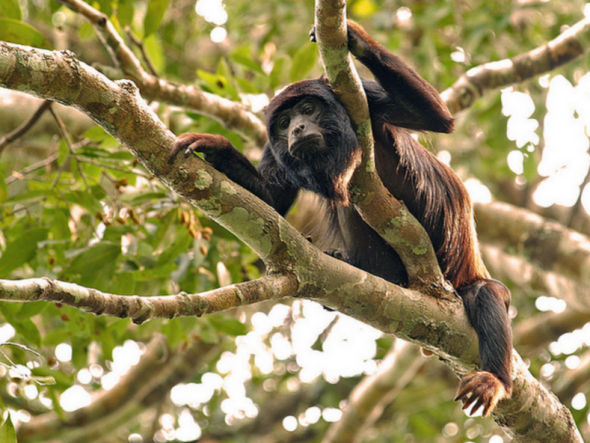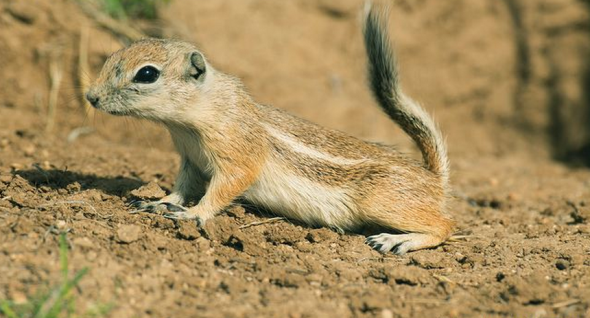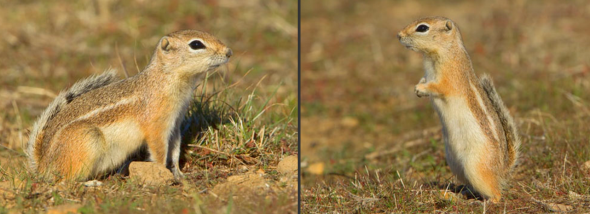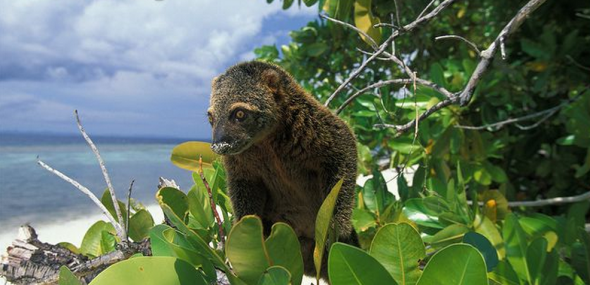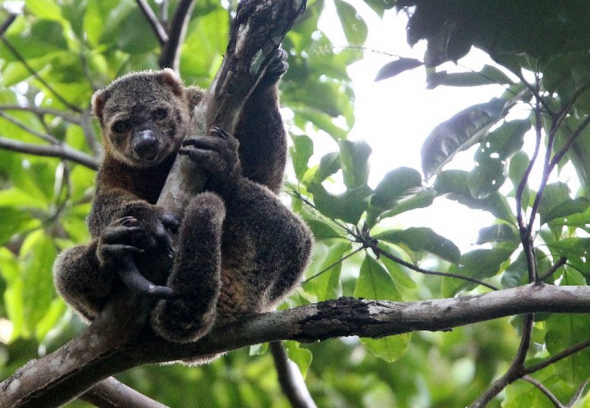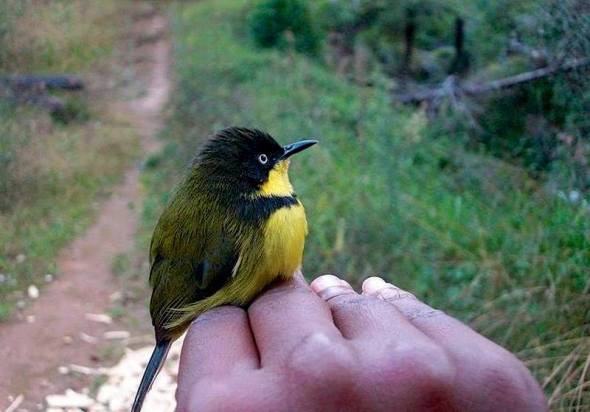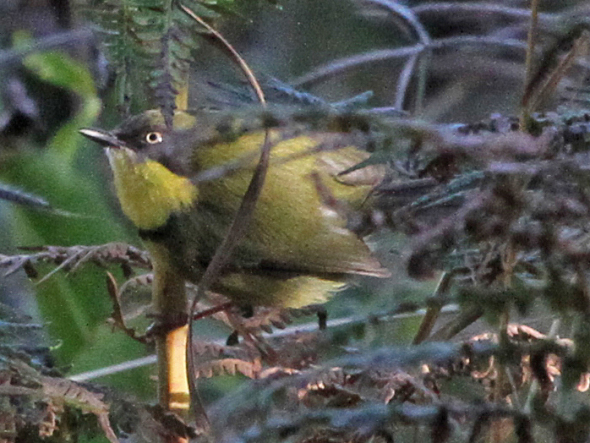Vegan Monday | Braised Tofu With Mushrooms Taiwanese Vegan Style.

Vegan Monday | Braised Tofu With Mushrooms Taiwanese Vegan Style.
Every Monday and Friday we release on this site a vegan or vegetarian recipe for hundreds of thousands of readers across the globe during the last six months of the year. Furthermore we also release everyday via our main Facebook page a vegan or veggie recipe. Vegan Monday’s and Fridays are aimed at everyone, to encourage our readers twice a week to at least try a meat free or dairy free diet. We’re not forcing our beliefs or diet whatever you wish to call it onto you, however we’re giving you the option to at least try, and why not?
Today’s environment is heating up and fast. The IPCC (Intergovernmental Panel on Climate Change) has predicted a 2-3oc temperature rise globally come 2050-2100, and the main reason for this rise is due to massive methane and carbon pollutants entering the atmosphere. So we believe its in our interests and, yours to at least try to reduce the effects of climate change by opting for one or two days a week (meat and dairy free)?.
Over the past month we have been asked by many people around the world to provide recipes about tofu, or have been submitted meat recipes to change into meatless recipes. This Monday we’re going back to Asia briefly and next week we’re going to get our hands into some real European vegan and veggie recipes.
BRAISED TOFU WITH MUSHROOMS TAIWANESE STYLE
INGREDIENTS:
- 500g fresh tofu
- 3 colours of peppers (half a pepper of each)
- A stick of celery or two
- Wood ear fungus, a handful
- A cup of dried shitake mushrooms
- One chopped spring onion
- A chili
- A thumb of ginger
- Sauce – 2 tbsp soy sauce and 1 tbsp thick soy sauce, some sesame oil, corn flour and a vegetable stock cube, 2 tsp sugar (please check for palm oil, if added please try to leave out)
- One carrot shredded for topping
- A handful of shredded spinach for topping
INSTRUCTIONS:
Soak the dried mushrooms and wood ear fungus overnight in a cup of water (keep the water for the gravy/sauce).
Cut the tofu into small/medium triangles. Chop up the rest of the ingredients to your liking. In a small bowl make the sauce with the 2 soy sauces and the stock cube, the dried mushroom soaked water and use cornflour to thicken and 2 tsp of sugar. (Please leave the sugar out if catering for diabetics, or children).
Now quick fry all your peppers and celery, for about 20 seconds in hot shallow oil. In the hot pan pour out the oil and add in some sesame oil, just about 2 tbsp. Put the tofu pieces in the hot pan and add a teaspoon of sugar to help the browning. Turn the tofu patiently until all your sides are browned and crispy. For a sugar alternative - please click the link here http://greatist.com/health/30-sugar-substitutes-any-and-every-possible-situation
When it looks ready, push the tofu to the side and add the other vegetables, stir with a bit more oil if you need it, also add a bit of soy sauce. Add the bowl of sauce you made, now braise the whole lot together for a couple of minutes so the sauce flavor combines into the tofu. Optionally add a dash of Worcester sauce and a sprig basil to serve, garnish with grated raw carrot and spinach!
I’m not a fan of tofu, (but that’s my opinion), however when I cooked this last night it was incredibly tasty, and infused with so many different tastes that slowly emit into ones mouth stimulating all the tastes buds, palate and finally brain. The tip is not to overcook these foods, as it will drain the flavor, and you’ll be left with a tasteless goop. You can add like I did sunflower seeds or mixed seeds to the top, and a handful of crushed pistachio. Don’t forget to check the quick and easy recipe out below via the video.
Have a nice day.
Dr Jose C. Depre.
Environmental, Botanical & Human Scientist.
ENJOY
Endangered Species Monday: Archaius tigris
Endangered Species Monday: Archaius tigris
This Mondays Endangered Species watch Post (ESP) I document on yet another African species of wildlife that hunting revenue is not helping to preserve. The Tiger Chameleon was identified back in 1820 by Dr Heinrich Kuhl (September 17, 1797 – September 14, 1821) was a German naturalist and zoologist. Kuhl was born in Hanau. He became assistant to Coenraad Jacob Temminck at the Leiden Rijksmuseum van Natuurlijke Historie. (Image: Credited to Henrick Bringsoe, A tigris).
In 1817 he published a monograph on bats, and in 1819 he published a survey of the parrots, Conspectus psittacorum. He also published the first monograph on the petrels, and a list of all the birds illustrated in Daubenton’s Planches Enluminées and with his friend Johan Coenraad van Hasselt (1797–1823) Beiträge zur Zoologie und vergleichenden Anatomie (“Contributions to Zoology and Comparative Anatomy”) that were published at Frankfurt-am-Main, 1820.
Commonly known as the Tiger Chameleon or Seychelles Tiger Chameleon the species is currently listed as [endangered] which is not uncommon as like many Chameleons within the Seychelles their range is shrinking by the year or being overrun by invasive botanical species.
Endemic to the Seychelles the species has been listed as endangered since 2006 of which populations trends are unknown. Much documentation often cites the species at “comparatively” low density, however one must not take this as factual until a true population count is seen. It has been alleged that for every [five hectares] there is possibly 2.07 individuals which isn’t good ‘if true’ since the island is only 455 km2.
From what we know the species remains undisturbed where there aren’t invasive Cinnamon trees identified as the Cinnamomum verum. However where C. verum is spreading the Tiger Chameleons habitat is under threat from this invasive plant. There is a negative correlation between Chameleon density and the presence of cinnamon, suggesting this invasion is detrimental to chameleon populations. Negative correlation is a relationship between two variables such that as the value of one variable increases, the other decreases.
The Tiger Chameleon’s main endemic range on the Seychelles islands is Mahé, Silhouette and Praslin. A historical record from Zanzibar (Tanzania) is erroneous. It occurs from sea level to 550 m asl, in areas of the islands that have either primary or secondary forest, or in the transformed landscape if there are trees and bushes present. Although they are currently estimated to have a restricted distribution on each island (following survey transects conducted by Dr Gerlach if anecdotal observations from transformed landscapes (e.g. degraded areas outside the areas surveyed) are valid, then the distribution would be larger than mapped at present.
To date the only [non-active] conservation actions that I am aware of are within the Vallee de Mai on Praslin which is currently not a protected national park. Fortunately the species is protected to some degree in the Morne Seychelles, Praslin and Silhouette National Parks. The primary threat within non-protected areas is as explained invasive Cinnamon which seems to be posing similar threats to both small reptilians, insects and birds on the islands and mainland Madagascar.
While the species has been in the past used as a trade animal it was alleged that there were no Cites quotes since 2000 - 2014. However from 1997 - 2013 a total of twelve live specimens were legally exported [despite the species threatened at risk status]. Cites allowed the twelve species to be exported for use within the pet trade which I myself find somewhat confusing. Two specimens were exported to Germany in 1981 with the remainder [10] sent to Spain. I am a little perplexed as to why these twelve specimens were legally exported, furthermore I have found no evidence or follow up data that would satisfy me in believing this export was even worthwhile for the species currently losing ground within their natural habitat.
From 1981 -2010 a further 98 dead specimens were legally exported for scientific zoological projects. Then in 1982 a single live specimen was legally exported with Cites permit for experimental purposes. While I cannot [again] locate any evidence or reason as to why this single specimen was exported alive - I must make it clear that Cites is sympathetic to Huntington Life Science’s and various other animal experimental laboratories. However this doesn’t prove that Cites has exported to anyone of these experimental research centers, it is merely my assumption.
Image: Archaius tigris
No other trade is reported out of the Seychelles, although re-export of specimens imported to Germany and Spain has been reported to Switzerland and South Africa, respectively (UNEP-WCMC 2014). This species is present and available in limited quantities in the European pet trade, and illegal trade and/or harvest may occur on a limited basis. ‘A’ report handed to myself from an [anonymous 2014] officer from the office of UNEP states that a population of some 2,000 specimens has been recorded [2014] however there is yet again no census historical data to back these claims/report up. I again must point out that if its proven there are no fewer than [2,000 Tiger Chameleons] remaining in the wild and, Cites is allowing export then Cites is going to come under immense pressure from International Animal Rescue Foundation Africa because exporting live animals for pet trade at such ‘alleged’ depressed populations - is neither helping the species nor supportive of conservation practices.
Threats
The main threat is habitat degradation as a result of the invasion by alien plants species, especially Cinnamomum verum, principally on Mahé and Praslin. Cinnamon is displacing other vegetation, it is present all over the islands and it is the fastest growing, heaviest seeding plant in most areas and is changing the composition of the forests. Currently it makes up 70-90% of trees in Seychelles forests, reaching >95% in some areas. For Archaius tigris, the cinnamon trees provide a normal structure of vegetation, but the invaded forests support a massively diminished insect population, somewhere in the region of 1% of normal abundance. This excludes invasive ants which are the only common invertebrates associated with cinnamon.
In addition, the cinnamon produces a denser canopy than native trees, giving deeper shade which excludes forest floor undergrowth (other than cinnamon seedlings), and this also is a factor in the reduced insect abundance. The Chameleons are found on cinnamon and in cinnamon invaded areas, as long as there is a wide diversity of other plants and a dense undergrowth. In fact, rural gardens can provide habitat for the Chameleons, because these tend to be more diversity in terms of flora, and therefore can support invertebrate fauna.
Dr Jose C. Depre
Environmental and Botanical Scientist.
Endangered Species Monday: Afrithelphusa monodosa.
Endangered Species Monday: Afrithelphusa monodosa
Warning: Extinction is now Inevitable
This Mondays (E.S.P) -Endangered Species watch Post I focus on a species of fresh water crab that’s rarely spoken about within the theater of conservation, or animal rights forums. Identified by Mr Bott from which I know little on and about this particular species of marsh crab is currently listed as endangered. Rarely do I document on a species of animal that I and other conservationists know will be extinct within the next five years. My aim for this Monday’s endangered species column is to raise awareness about the plight of this little creature, in a way I hope will force Cites and the Guinea government to now implement emergency evasive action to halt extinction immediately. (Image: Purple Marsh Crab, photographer unknown)
I must also point out that one must not confuse the [common name] of this species [above], identified back in 1959, to that of the United States [Purple Marsh Crab]. Professor Linnaeus created the nomenclature system for a reason, and yet again I am seeing two species of animals that hold the same common names being confused with one-another. Sesarma reticulatum is not under any circumstances related to the Afrithelphusa monodosa pictured above and below.
Endemic to Guinea the species was listed back in 1996 as [critically endangered]. However since the last census was conducted back in [2007] the Purple Marsh Crab has since been submitted into the category of [endangered]. Unfortunately as yet there remains no current documentation on population size, furthermore from the 1996 census, marine conservation reports suggest that no fewer than twenty specimens have been collected from the wild. To date the ‘estimated’ population size stands at a mere 2.500 mature individuals.
Back in 1959 Mr Bott identified the specimen as Globonautes monodosus however from 1999 the species was re-named as Afrithelphusa monodosa. The Purple Marsh Crab is one of only five species in the two genera of which belong to a very rare group of fresh water crabs that are still endemic to the Guinea forests within the block of Western Africa. All five specimens within the two genera are listed as either [endangered or critically endangered], and as such its quite likely that all five specimens will become extinct within the next five to eight years, or possibly even sooner. It is without a doubt that one of the next species on the planet to go extinct will be the Purple Marsh Crab.
Allegedly new specimens have been discovered since [1996] however these reports are somewhat sketchy. When I last documented on the specimen back in 2010 there were no conservation efforts or any projects in the planning process that would help preserve the crabs future survival. We are now in 2015 and I have yet to witness any conservation projects planned or taking place, which I find rather frustrating. As explained the species will be extinct within a matter of years of which the Convention on International Trade of Endangered Species (Cites) should be protecting.
A. monodosa lives within the Guinea swamps and all year round wetland habitat within the northwestern Guinea. The original vegetation cover found at the farmland near the village of Sarabaya where this species was recently collected lies in southern guinea savannah in the semi-deciduous moist forest zone. Specimens of A. monodosus were collected from cultivated land from burrows dug into permanently moist soil each with a shallow pool of water at the bottom. At the end of the dry season after a six-month period without rain the soil in this area nevertheless remains wet year round, so this locality either has an underground water table close to the surface, or a nearby spring. The natural habitat of A. monodosus is still unknown but presumably this cultivated land was originally a permanent freshwater marsh.
There were no nearby sources of surface water and it is clear that these crabs do not need to be immersed in water (as do their relatives that live in streams and rivers), and that A. monodosus can meet its water requirements (such as keeping its respiratory membranes moist and osmoregulation of body fluids) with the small amount of muddy water that collects at the bottom of their burrow. This species is clearly a competent air-breather and has a pair of well-developed pseudol.
Image: Credited to Piotr Naskrecki. Purple Marsh Crab.
Current threats
To be truthfully honest I feel documenting on the current threats is in reality a waste of my time because both the Guinea government and Cites have known of these threats for many years. Yet little if any actions are being taken to suppress these threats. Either way I will document on them in the hope that someone will push for protection or whip into action a protective project sooner rather than later.
To date the species hasn’t been listed on either Cites (I-II) Appendix’s, the major present and future threats to this species include habitat loss/degradation (human induced) due to human population increases, deforestation, and associated increased agriculture in northwest Guinea.
International Animal Rescue Foundation Africa propose the following actions to be undertaken immediately:
- Up to date assessment of population size and location of any new and old habitats documented.
- Surveys to asses diets, predators, diseases and behavior.
- Investigations to locate new subspecies.
- Protection zones established within the highest populated zones.
- Liaising the Guinea government for funding of conservation projects.
- Listing of the species in (I Appendix) Cites.
- Community education and awareness programs.
- Removal of healthy and gene strong species for captive breeding programs.
Crabs Role within the Eco-System
Crabs are one of the major decomposes in the naval environment. In other terms, Crabs help in cleaning up the bottom of the sea and rivers by collecting decaying plant and animal substance. Many fish, birds and sea mammals rely on crabs for a food source. Regardless of if this is one species with low individual populations or not, extinction will only harm other animals. Furthermore will reduce other species food sources. The video below depicts the [Marsh Crabs] and their normal natural environment. The species in question which is identical to the Guinea Purple Marsh Crab is not included within the video but is related to the five genera.
Thank you for reading.
Dr Jose C. Depre
Environmental and Botanical Scientist.
info@international-animalrescue-foundation.org.uk
Endangered Species Friday: Anas melleri.
Endangered Species Friday: Anas melleri
This Fridays Endangered Species watch Post (ESP) focuses on a very undocumented bird known scientifically as Anas melleri and commonly known as the Meller’s Duck.
The Meller’s Duck was identified back in 1865 by lawyer and Doctor Philip Lutley Sclater FRS FRGS FZS FLS (4 November 1829 – 27 June 1913) was an English lawyer and zoologist. In zoology, he was an expert ornithologist, and identified the main zoogeographic regions of the world. He was Secretary of the Zoological Society of London for 42 years, from 1860–1902.
Listed as endangered, populations are on the decline quite extensively throughout the birds entire range. A. melleri qualified for (endangered status) back in 2012. Endemic to Madagascar the species can be located on the eastern and northern high plateau. Populations are isolated on massifs on the western edges of the plateau. Documented reports from the west of the island most probably refer to vagrant or most likely wandering birds.
Its been alleged that at some time from 2012 re-introduced populations on the island of Mauritius are now extinct - however there remains no hard hitting evidence to back this claim up, conservationists have stated that a ‘probable extinction’ occurred on the island.
The Meller’s Duck was once described as common on the Africans island of Madagascar, unfortunately there is no evidence to back this claim up either. Conservationists that visit the island regularly from International Animal Rescue Foundation Africa and have documented on the Meller’s Duck previously have been informed by locals that the species is rarely seen, however huntsmen will peddle the meat of ducks into local villages.
International Animal Rescue Foundation Africa stated the species had been documented by explorers as ‘densely populated’ on the island from the 1500’s to 1800’s. Sadly since human colonization increased on the island after the French protectorate from the mid 1800’s human population growth on the island has attributed to current decline of the species. Over the last twenty years human population has skyrocketed significantly which unfortunately has led to vast swathes of habitat destroyed and illegal poaching to occur.
“All birds seem to be within a single subpopulation which is probably continuing to decline rapidly. Extinctions are likely to occur in under a few years, five years max”…
Conservation teams like the local communities have confirmed that the species is sadly no longer common ‘anywhere’ other than forested areas of the northwest and in the wetlands around Lake Alaotra where there are some breeding pairs, but where many non-breeders collect, with up to 500 birds present. All birds seem to be within a single subpopulation which is probably continuing to decline rapidly. Extinctions are likely to occur in under a few years, five years max!.
Population sizes are incredibly depressed. We now know the species numbers at 2,000 to 5,000 individuals which equates to exactly 1,300 to 3,300 mature individuals. Should pet collection, poaching, habitat destruction Etc continue at the rate it is extinctions will as explained occur in roughly (730 days). That’s how serious the problem is.
Conservation projects are underway of which the IARF have contributed funding towards the Durrell Wildlife Conservation Trust. The species occurs in at least seven protected areas, and is known from 14 Important Bird Areas (78% of eastern Malagasy wetland IBAs) (ZICOMA 1999). No regular breeding sites are known. In 2007, there was a drive to increase the number of institutions that keep the species in captivity, and as such the bird is a nationally protected species.
Conservation actions planned: Protect remaining areas of least-modified wetlands at Lake Alaotra. Conduct wide-scale status surveys of eastern wetlands. Study its ecology to identify all causes of its decline and promote development of captive breeding programmes.
(Please note all new monetary and equipment grants provided by IARFA from August of last year to present has yet to be updated into the main transparency register onsite)
Meller’s duck breeds apparently during most of the year except May–June on Madagascar, dependent on local conditions; the Mauritian population has been recorded to breed in October and November (however as explained is likely to now be extinct). Unlike most of their closer relatives—with the exception of the African black duck—they are fiercely territorial during the breeding season; furthermore, pairs remain mated until the young are.
Threats
A. melleri is still classed as the largest species of wildfowl found in Madagascar and is widely hunted and trapped for subsistence (and for sport). Interviews with hunters at Lake Alaotra suggest c.450 individuals are taken each year, constituting 18% of the global population.
Long term deforestation of the central plateau, conversion of marshes to rice-paddies and degradation of water quality in rivers and streams, as a result of deforestation and soil erosion, have probably contributed to its decline too. Widespread exotic carnivorous fishes, notably Micropterus salmoides (although this may now be extinct) and Channa spp., may threaten young and cause desertion of otherwise suitable habitat.
Its decline on Mauritius has been attributed to hunting, pollution and introduced rats and mongooses as well as possible displacement by introduced Common Mallard Anas platyrhynchos. Pairs are very territorial and susceptible to human disturbance.
Extinction is likely to occur of which continued protective captivity projects must increase for the birds future survival and re-introduction elsewhere.
The video below depicts a Meller’s Duck captivity project in Germany.
Thank you for reading.
Dr Jose C. Depre
info@international-animalrescue-foundation.org.uk
http://www.speakupforthevoiceless.org
Please donate to SAYNOTODOGMEAT.NET < Click the link - contact@saynotodogmeat.info
Endangered Species Monday: Alouatta belzebul.
Endangered Species Monday: Alouatta belzebul
This Monday’s endangered species article from the (Endangered Species Watch Post) focuses on the Red Handed Howler Monkey of which is listing near to endangerment. (Image Red Handed Howler Monkey)
Generically identified as Alouatta belzebul back in 1766 by Professor Carl von Linnaeus (1707 – 10 January 1778), also known after his ennoblement as Carl von Linné was a Swedish botanist, physician, and zoologist, who laid the foundations for the modern biological naming scheme of binomial nomenclature.
Listed as vulnerable the species is endemic to Brazil (Alagoas, Maranhão, Pará, Paraíba, Pernambuco, Rio Grande do Norte, Sergipe and Tocantins). Populations are currently on the decline of which its very likely the species will be re-categorized as endangered within the next five years, if not sooner.
A. belzebul is said to be extremely common in some areas such as Marajó however is noted as rare within the Atlantic Forest portion of the range known as; Rio Grande do Norte, Alagoas, Paraíba and Pernambuco. Last survey census’s reported the species to be inhabiting at least ten isolated locations of which two hundred individuals remain in each plot.
International Animal Rescue Foundation Brazil have for the past three years been conducting surveys within the area will be submitted to the (IUCN). Furthermore the Environmental Protection Unit now re-based in Londrina are working with local communities, hunters and farmers within the A. belzebul range to preserve commonly known species of monkey, birds, amphibians and flora within the region.
IARFB are also currently conducting investigations to locate where sugar cane is being exported too and used within from the A. belzebul’s region. Its believed that America, Mexico, South America, and Europe are purchasing large sugarcane exports from the region. Tesco, J.S Sainsbury’s, Cooperative Food Group, Asda, Walmart, Woolworths and Spar have all been noted on suppliers exports from the regions. Aldi, Lidl, Quick-Save, Budgens have been ruled out. We are least impressed though with J.S Sainsbury’s name written on export documents of sugar cane from the region.
Within the ten isolated locations six populations are known to reside in Paraiba, two in Rio Grande de Norte, one in Pernambuco, and one in Alagoas. The largest population in the Atlantic Forest is in Pacatuba in Paraiba with about 80 animals. There have been five registered local extirpations from forest fragments in the last 50 years.
Little known conservation actions are under way within their endemic region and as explained populations are decreasing and nearing endangerment. A. belzebul is listed within the family of Atelidae which is one of the very first five of new recognized ‘new world monkeys’. Its quite likely that new sub-species of the Red Handed Howler Monkey may be located as well as newer species of ‘new world monkeys’ too within the coming years. Only five years ago did scientists locate over 100,000 new species within the Yasuni National Park, Ecuador so in reality anything is possible.
The Atelidae family host howler, spider, woolly and woolly spider monkeys (the latter being the largest of the New World monkeys). They are found throughout the forested regions of Central and South America, from Mexico to northern Argentina.
When the species is not foraging on the ground floor they can normally be found resting in the canopies of trees at a height of some sixty feet. Social groups normally consist of seven to twenty members that will host mature males, females juveniles and infants. Males normally take lead of the pack or (troop).
These large and slow-moving monkeys are the only folivores of the New World monkeys. Howlers eat mainly top canopy leaves, together with fruit, buds, flowers, and nuts. They need to be careful not to eat too many leaves of certain species in one sitting, as some contain toxins that can poison them. Howler monkeys are also known to occasionally raid birds’ nests and chicken coops and consume the eggs.
Image: Adult Red Handed Howler Monkey.
Howlers are the only New World primates which regularly include mature leaves in their diet, although softer, less fibrous, young leaves are preferred when they are available. Their folivory and ability to eat mature leaves is undoubtedly one of the keys to their wide distribution and the wide variety of vegetation types they inhabit.
Mature fruit is the other important food item, especially wild figs (Ficus) in many regions, but they also eat leaf petioles, buds, flowers (sometimes seasonally very important), seeds, moss, stems and twigs, and termitaria. The diet of two A. belzebul groups in the Caxiuanã National Forest was studied by Souza et al. (2002). They were largely folivorous but would switch to fruits whenever available, especially during the wet season.
Size:
Adult male weight 7.27 kg (n=27),
Adult female weight 5.52 kg (n=26)
Adult male weight 6.5-8.0 kg (mean 7.3 kg, n=27),
Adult female weight 4.85-6.2 kg (mean 5.5 kg, n=26) .
Threats
Listed on Cites Appendix II there are few threats associated with the species. Nevertheless they still remain and if left unchecked can rapidly increase placing the new world monkey in danger of extinction.
In the Amazon, the species is widespread, although they are hunted. The Amazon populations have suffered severely from forest loss throughout their range in southern Pará over the last decade. In the Atlantic Forest population, the major threat is the fragility of the remaining small forest patches to stochastic and demographic affects (habitat loss and fragmentation has been mainly due to sugar-cane plantations).
Please share and make aware the Red Handed Howler Monkey’s plight. Tip: Check sugar products from local shops and hypermarkets to ensure your not aiding the destruction of their natural habitat via your sugar purchase. Check your local candy and other shopping supplies. If necessary contact companies politely asking where they are obtaining the sugar products from. Never give up.
Thank you for reading.
Dr Jose C. Depre.
Environmental and Botanical Scientist.
Chief Executive Officer
Endangered Species Friday: Ammospermophilus nelsoni
Endangered Species Friday: Ammospermophilus nelsoni
This Friday’s Endangered Species Watch Post (ESP) we focus a little attention on a species of squirrel that’s rarely mentioned within the conservation or animal rights arena. A. nelsoni was identified by Dr Clinton Hart Merriam (December 5, 1855 – March 19, 1942). Dr Merrian was an American zoologist, ornithologist, entomologist, ethnographer, and naturalist. (Image; Archive, A. nelsoni)
Year of identification was back in 1893 of which the species remains endemic and extant to the United States, State of California. Environmentalists undertook two census’s of the species’s current population size, known threats and any new threats to the species back in 1996 and, 2000. Both census’s revealed few changes with regards to current status, of which the species was listed as endangered from 1996 and again in 2000.
Today the San Joaquin Antelope Squirrel as the rodent is commonly know remains at [critically endangered] level. Populations are continuing to decline within a country that one would expect to see good conservation measures increasing population sizes and, eliminating any new and past threats.
To date the current population size remains unknown which “may-well be why the species has qualified for listing on the [critically endangered] list”. Scientists undertook a rather crude population survey on three to ten squirrels per hectare on 41,300 hectares of the best and known remaining habitat. The survey then provided a rough estimate of which stated population sizes could be standing at [124,000 - 413,000]. However as the true population size is currently unknown one must not take this survey into consideration when documenting or teaching students. The following estimates were based on more in-depth multiple crude evaluations back in [1980].
Current “trend” evaluations from 1979 have confirmed that many San Joaquin Antelope Squirrel populations have unfortunately decreased throughout their known range although, even these surveys are still pretty much sketchy. A further trend evaluation survey back in 1980 revealed more-or-less the same findings from (1979) of which the species has decreased through much of its small (clustered range) manly within, San Joaquin Valley, California.
Recent protection efforts in the southwestern San Joaquin Valley likely have to some degree slowed the rate of decline and, the species remains common in [some protected areas]. Probably the rate of decline is less than 30% over the past 10 years. Nevertheless the species is still in decline over much of its range and, despite conservation efforts the San Joaquin Antelope Squirrel is sadly nearing extinction (within the wild).
Data proves for now the species has declined throughout much of its former range by some twenty percent. Back in 1979, extant, uncultivated habitat (but including land occupied by towns, roads, canals, pipelines, strip mines, airports, oil wells, and other developments) for the species was estimated at 275,200 hectares (680,000 acres, 2,752. None of the best historical habitat remained.
One study indicated that densities in open Ephedra plots and shrubless plots ranged from 0.8 to 8.0 squirrels per hectare, but all but two sites had densities of four or less per hectare. Densities on shrubless, grassy dominated sites were equal to or higher than those on shrubby sites.
The San Joaquin antelope squirrel is dull yellowish-brown or buffy-clay in color on upper body and outer surfaces of the legs with a white belly and a white streak down each side of its body in the fashion of other antelope squirrels. The underside of the tail is a buffy white with black edges. Males are approximately 9.8 inches and females are approximately 9.4 inches in length
Breeding normally takes place during late winter to early spring of which young will normally be born from the beginning of March. Female gestation normally lasts no longer than one single month. Young do not normally emerge from the den until around the first or second weeks of April. The San Joaquin antelope squirrel has only one breeding cycle during the entire year of which this is timed just right so that when young are born there is much vegetation and food for young to feed and hide within after weening. Weening of young is believed to start before the young even emerge from the den.
A. nelsoni is omnivorous, feeding mostly on green plants during the winter and insects and carrion when these are available. It occasionally caches food. The squirrels live in small underground familial colonies on sandy, easily excavated grasslands in isolated locations in San Luis Obispo and Kern Counties.
Image: A. nelsoni. Credit (Mark Chappell).
Half of the remaining habitat supports fewer than one animal per hectare, 15% of the remaining habitat supports 3-10 animals per hectare (generally four or fewer per hectare, California Department of Fish and Game 1990). The species Spermophilus beecheyi reportedly may restrict the range of A. nelsoni. Among several predators, badger is most important, and lives in small groups.
Threats
The decline is a result of loss of habitat due to agricultural and urban development as well as oil and gas exploration practices. Primary existing threats include loss of habitat due to agricultural development, urbanization, and petroleum extraction, and the use of rodenticides for ground squirrel control. Overgrazing and associated loss of shrub cover is a concern in some areas. These threats will be alleviated by the implementation of the San Joaquin Endangered Species Recovery Plan. There are some discussions that the current drought within the region “may” have a profound effect onto the species however, this concern remains just that and, no proven data surveys have shown drought to be of a threat as yet.
Thank you for reading and, have a nice weekend from all the team at International Animal Rescue Foundation.
Dr. Jose C. Depre
Environmental and Botanical Scientist.
info@international-animalrescue-foundation.org.uk
Endangered Species Friday: Ailurops ursinus
Endangered Species Friday: Ailurops ursinus
A. ursinis was identified back in 1824 by Dutchman Dr Coenraad Jacob Temminck - (31 March 1778 – 30 January 1858) was a Dutch aristocrat, zoologist, and museum director. Listed as vulnerable the species is endemic to Indonesia on the island of Sulawesi of which there remains limited data on this rather fine specimen of marsupial that resides in the family phalangeridae. (Image: Young Bear cuscus)
Populations of the (Bear cuscus) as its commonly known continue to steadily decline even though there are limited - conservation measures in place protecting the species (There remains as yet no data on population size). The Bear cuscus has practically gone extinct within the Tangkoko-DuaSudara Nature Reserve of which a staggering 95% decline has been recorded within the region alone of which the primary threat within the nature reserve is hunting and trade for pets.
North Sulawesi has also seen a staggering decline identical to the population decreases documented within the Tangkoko-DuaSudara Nature Reserve too. Yet again hunting and the illegal pet trade are very much responsible, and may very well within the next five to ten years lead to a complete extinction occurring.
As much as I myself hate to say it I am pretty certain from viewing statistical data past and present that extinctions are going to occur even sooner than predicted. Should extinctions occur it proves yet again that poaching is having a disastrous effect onto just about every African and Asian species known.
Habitat loss and forest clearance are all playing a pivotal roll at decreasing populations of this beautifully attractive marsupial. As a conservation and botanical scientist sometimes I wonder to oneself why we even bother to help species of animals and flora when some governments show no support, or respect whatsoever in our quest to protect and serve. Then I remember, my children and their children’s heritage is just as important as mine and the teams fight to protect.
Bear cuscus are known as arboreal marsupials meaning, they mostly thrive and spend the majority of their peaceful and playful lives within trees and dense forest. Unfortunately these forests and trees are slowly dwindling in size primarily for land clearance to support local farms and communities and, not forgetting slash and burn activities. I cannot begin to imagine what these creatures think and feel when destructful and greedy humans destroy their homes and pastures. The feeling of not-knowing-when such harm is to be inflicted must be terrorizing for them.
The genus contains the following single species that is known to be related to the Bear cuscus; Ailurops melanotis that inhabits the Salibabu Island listed as (critically endangered) and endemic to Indonesia on the island of Sulawesi. Typically found in undisturbed tropical lowland moist forests, this species does not readily use disturbed habitats, thus it is not usually found in gardens or plantations. It is a largely diurnal and as explained a arboreal species that is often found in pairs. Diet usually consists of a variety of leaves, preferring young leaves, and like many other arboreal folivores it spends much of its day resting in order to digest similar to the Koala bear of Australia.
Image: Bear cuscus relaxing in the canopy of Tangkoko
The only known conservation actions that are taking place are within in few protected areas, that include: Tangkoko-DuaSudara Nature Reserve, Bogani Nani Wartabone National Park, Lore Lindu National Park, Morowali National Park, and a host of forest reserves. This species is nominally protected by Indonesian law. Unfortunately even though the species is protected the illegal pet trade still continues of which I myself have on many occasions located small pet shops in Indonesia selling Bear cuscus from rusty, cramped cages.
Threats
The species is threatened by habitat loss due to clearance of forest for small-scale agriculture and through large-scale logging. It is also heavily hunted by local people for food, and collected for the pet trade. Cuscus hunting forays are often planned before special occasions (e.g., birthday celebrations) in order to provide future guests with the greatly appreciated meat. (These inferences are based on some six months of residence among Alune villagers in 1993–95, which included participation in forest activities and standard ethnographic data collection.)
Thank you reading.
Dr Jose C. Depre
Environmental and Botanical Scientist.
info@international-animalrescue-foundation.org.uk
Please donate by clicking the link below and help the board of directors establish their Viet Nam pet and wildlife rescue and rehabilitation clinic today. Without your help we cannot take dogs, cats and small bush meat animals of the streets and into safety. No donation is to small and all donations are greatly and kindly appreciated.
Please donate here:
https://www.facebook.com/SayNoToDogMeat/app_117708921611213
Stay up to date with our SNTDM newsletter:
https://www.facebook.com/SayNoToDogMeat/app_100265896690345
Thank you.
Stay up to date with African and international environmental and animal welfare affairs here:
https://www.facebook.com/pages/International-Animal-Rescue-Foundation-World-Action-South-Africa/199685603444685?fref=ts
Endangered Species Monday: Apalis flavigularis
Endangered Species Monday: Apalis flavigularis
This Monday’s endangered species article I focus again (with a very frustrated mind) on yet another threatened species of bird which is, one of my favorites. Scientifically named as the Apalis flavigularis the species is listed as endangered. Commonly identified as the Yellow-throated Apalis the bird was primarily discovered back in 1893 by Captain George Ernest Shelley (15 May 1840 – 29 November 1910). Captain George Ernest Shelley was an English geologist and ornithologist. He was a nephew of the poet Percy Bysshe Shelley.
Captain Shelley was educated at the Lycée de Versailles and served a few years in the Grenadier Guards.
His books included A Monograph of the Cinnyridae, or Family of Sun Birds, A Handbook to the Birds of Egypt (1872) and The Birds of Africa (5 volumes, 1896 - 1912).
Endemic to Malawi a landlocked country in southeastern Africa, is defined by its topography of highlands split by the Great Rift Valley and enormous Lake Malawi. Bordering Mozambique, Zimbabwe and, Zambia. Populations are decreasing quite rampantly throughout the birds range.
A. flavigularis is restricted within its range to the following mountainous regions Mt Mulanje, Mt Zomba, Mt Malosa in south east Malawi. From 1983 the species was once considered common within its habitat however has since declined to depressing levels. Some reports have stated that the species may-have occurred within the Mozambican region of Mount Chiperone however, there are no records to back these claims up.
Further reports suggest that the species does not occur within similar regions of Malawi or adjacent to Mozambique. Back in 2008 surveys suggested there was a mere 7,900 individuals in the cedar forest on Mt Mulanje suggesting that the species population on Mulanje may have likely exceeded to some 10,000 individuals.
In all the total population count to-date stands now at some 2,300-4,400 individuals. The species is banded within the number of 2,500-9,999 individuals. This equates to 1,667-6,666 mature individuals, rounded here to 1,500-7,000 mature individuals.
Threats
The rapidly increasing human population in south-eastern Malawi, swelled by huge numbers of refugees during the last 20 years, is posing a serious threat to the survival of mid-altitude forest in the lowest parts of its range - the lower slopes of Mt Mulanje, in particular, are steadily being deforested for agriculture and timber. In 1995-1996, severe fires destroyed some indigenous forest on Mt Zomba.
Fires cause a proliferation of invasive plants, in particular Rubus ellipticus, on Mt Mulanje, however presence of the species was found to be positively correlated with R. ellipticus by Mzumara et al. (2011) so this may not present a significant threat. The “then” Malawian president Bingu wa Mutharika granted a Japanese minerals company a concession covering the whole of Mount Mulanje to mine rare earths in 2011, and it was reported that Tuchila plateau had been clear-felled and exploratory drilling had begun in late 2011.
It is uncertain whether the subsequent change in head of state following the death of the president in April 2012 will affect the mining concession.
The new head of state President Peter Mutharika seems to have made some small changes regarding mining however nothing really major to show improvements to the natural wildlife or countries only endemic bird. Back in June 2015 the Malawian Congress Party - Law maker for Kasunga East, Madaliso Kazombo criticized mining contracts in the country for lacking transparency saying its high time locals had shares in the in the companies of foreign investors. Read more >here<
During past and to date debates the countries mining operations continue to threaten wildlife and waterholes that much of the countries large taxa depend on. Back in 2014 a uranium mine sludge discharged placed countless species of animals in danger of immediate death - not forgetting the countries most endangered bird - Apalis flavigularis.
Toxic substances flowed from the tailings pond at the Kayelekera Uranium Mine into Lake Malawi 50 kilometers (30 miles) downstream include waste uranium rock, acids, arsenic and other chemicals used in processing the uranium ore. Lake Malawi in eastern Africa is the world’s ninth largest lake, some 580 kilometers (360 miles) long, and 75 kilometers (47 miles) wide at its widest point. It extends into Malawi’s neighbors Tanzania and Mozambique.
The lake provides water for drinking and domestic use to millions of Malawians and wildlife. Part of the lake is protected as a national park, and it is inhabited by more than 850 cichlid fish species found nowhere else on Earth.
Back in 2013, Paladin Africa’s Kayelekera Mine in Karonga produced 1,066 metric tonnes of U3O8, triuranium octoxide, a compound of uranium. One of the more popular forms of yellowcake, U3O8 is converted to uranium hexafluoride to make enriched uranium for use in nuclear power plants and nuclear weapons.
A statement issued by the Natural Resources Justice Network (NRJN), a coalition of 33 civil society organizations active in the extractive industry sector – mining, oil and gas, expressed grave concerns about a recommendation by the National Water Development and Management Technical Committee in the Ministry of Agriculture that the minister issue a discharge permit to Paladin Africa.
Conservation actions under way include: All remaining indigenous forest within the species’s range is legally protected within Forest Reserves, but this no longer confers much protection.
Conservation actions proposed: Examine its taxonomic status in more detail. Initiate a campaign in Malawi to promote public awareness and support for forest conservation. Strengthen protection of remaining forest habitat. Conduct surveys to assess its population size and distribution. Establish a programme to monitor its population and habitat on a regular basis.
Thank you for taking to the time to read and, please share.
Dr Jose C. Depre.
Environmental and Botanical Scientist.

